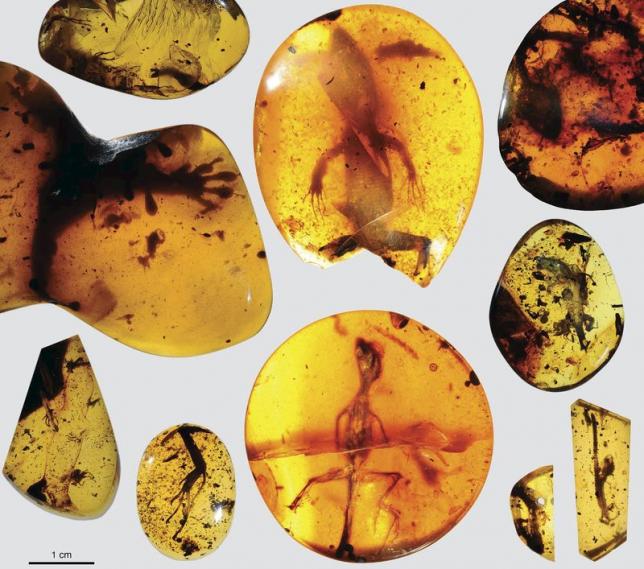Proof of evolution or creation? Ancient lizards preserved in amber
Researchers have studied the remains of lizards and some body parts preserved in amber, dated to be about 99 million years old. Some scientists view this as a glimpse into a lost world, while others take it as proof of Creationism.

"The fossilised amber provides a view into a lost world, revealing that the tropics of the Mid-Cretaceous contained a diverse lizard fauna," co-author Dr. Edward Stanley of the Florida Museum of Natural History said during an interview with BBC News.
Stanley said that the fossils seem to be a transitional form from that of the "standard" lizard to chameleons.
"This 'missing link,'" he said, "is roughly 80 million years older than the next oldest chameleon fossil, and shows that features like the chameleon's projectile tongue was present deep in its ancestry."
According to Science News, 12 pieces of amber containing lizard body parts were found in Myanmar. The preserved remains of a baby lizard, said study co-author Juan Daza of the Sam Houston State University, could be the modern chameleon's oldest known relative.
However, creationists seem to have a different view on this recent study, titled "Mid-Cretaceous amber fossils illuminate the past diversity of tropical lizards," published last month on Science Advances.
In an article on the Institute for Creation Research, science writer Brian Thomas argued that the lizards preserved in amber "all confirm biblical creation in several different ways."
"Secular scientists assigned an age of 99 million years to these Burmese amber deposits. But the encased organisms show no evidence for evolution between creature kinds," Thomas wrote. He added, "This means that lizards living with dinosaurs looked like lizards that live today, which fits the Bible's perspective of recent creation."
Dr. Elizabeth Mitchell of Answers in Genesis also refuted evolution, saying that the what was found are evidence of variation within a species rather than that of upward evolution, and that those preserved animals are "a testimony to the lizard diversity that existed in the world destroyed by the Flood of Noah's day."





